It’s a warm Friday afternoon in July, and Thorncliffe Park is teeming with families. They’re leaving the local mosque after the Jummah Prayer. Some are heading home to one of the high-rise towers scattered across this densely populated neighborhood on the fringes of Toronto, Canada’s biggest city. Others are making a detour to the nearby Iqbal Halal Foods, the largest ethnic grocer in the province of Ontario.
I’m there researching a story on the urban renewal of Thorncliffe, a transitional neighborhood that has seen immigrants come and go for three decades now, as they settle here for the first few years of life in Canada and then move on to more permanent housing.
Thorncliffe’s residents hail mostly from South Asia, with Filipino, Caribbean, Chinese, and Latino migrants completing the mix. While tensions do arise between ethnic groups, the residents I spoke to were beaming with pride as they described their safe and vibrant community. Like thousands before them, Thorncliffe’s families will go on to build their lives in one of the most immigrant-friendly countries in the world.
Canada is accepting immigrants at a record-breaking rate, and I’m one of them. Next year’s target has been set at 300,000 by Immigration Minister John McCallum, who sees immigration as a major counterpoint to the country’s demographic changes, as Canada’s population ages and leaves the workforce.
Multiculturalism ranks among the top reasons that make people here proud to be Canadian. Canada’s decision to accept 25,000 Syrian refugees through the first months of 2016 and the country’s warm welcome of its new residents have drawn international praise. At a time when European leaders are denoucing the failures of multicultural societies and redoubling their efforts to stop illegal immigration at the source, and the new president of the United States is attempting to enact polices that single out certain immigrant groups based on their ethnicity and religion, Canada increasingly appears to be the last western country to be cheering for immigration and diversity.
But even in Canada, right-wing extremism is starting to take hold.
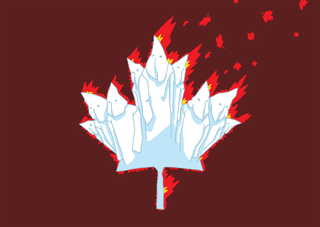
Immigration seen in a positive light
Canadians see immigration as
essential
to the country’s economy and well-being.
Former prime minister Pierre Trudeau was the first to define
multiculturalism as a policy
in 1971 and multiculturalism is
hailed
by his son Justin, Canada’s current prime minister, as a driving force of the country.
Since the 1990s, immigration has increased sharply under various administrations. A fifth of the population is foreign-born. In Toronto, North America’s fourth largest city, the figure is as high as 48%.
Since Donald Trump was elected President of the US, many have joked – some more seriously than others – about Americans moving to Canada. And the situation puzzles observers both in Canada and abroad. How could a country whose past and present is so inextricably linked to immigration escape the xenophobic feelings that are brewing in Europe and the U.S.?
Canadians see immigration as essential to the country’s economy and well-being
According to experts, the reason is this: Canada has never had to face some of the challenges that fuelled xenophobic discourses elsewhere. Its economy has been left relatively unscathed by the global recession. Its geographical location has rendered it largely immune to undocumented migration. The volume of immigration, although spectacular, is never bound to yield any surprise. The government announces its targets each year just like it lays out its budget.
Landed immigrants, students, and temporary workers are carefully handpicked and vetted through lengthy selection processes that are meant to fill the country’s needs. Even refugees – at least those who have been selected by the government after a long screening process – are portrayed as playing a crucial role in reaching the country’s economic, social, and cultural goals. In Canada, immigration is a nation-building exercise.
As long as Canada can keep immigration under control – and there are no immediate reasons why it wouldn’t – the country will be safe from bigotry, some say. Pluralism is so deeply ingrained here, we’d be able to withstand the harshest winds of xenophobia blowing in from across the Atlantic Ocean and from south of the border, so the rhetoric goes.
So how can it be that right-wing extremism on the rise here, tool?
Canada was built on oppression
A recent study headed by hate crime expert Barbara Perry from the University of Ontario Institute of Technology, mapped at least 100 white supremacist and neo-Nazi groups across the country, plus an unknown number of “lone wolves.” This number has been steadily rising since the 1980s.
These groups and individuals are actively targeting Aboriginal, Black, Jewish, Muslim, Asian, and LGBTQ people as well as immigrants (hate crimes against Muslims alone have more than doubled in the past three years).
Their existence and impact remains vastly underestimated by the government and local police forces, Perry’s study warned, although CSIS, the country’s intelligence agency, did acknowledge in internal documents that right-wing extremism posed a more pressing threat to national security than radical Islam. Right-wing extremism is thriving in an “enabling environment,” meaning a society in which racism and gender discrimination are still part of the social fabric, Perry explained.
Bigotry has always been part of Canada’s history. The country was built on the colonization and subjugation of indigenous people, which goes on to this day. Its founding populations hailed from Ireland, the UK and northern Europe, not just because these were the countries that were massively producing migrants at the time, but also because non-white immigration was first banned, then discouraged, until the middle of the 20th century.
Southern and Eastern Europeans were only tolerated to cope with labor shortages – workers were needed for low-skilled jobs in the agricultural, lumber, mining, construction and textile sectors. Asians were especially despised. Slavery was legal and practiced until 1834 – yes, you’ve read that right. Among slave owners was James McGill, founder of our most prestigious institution of higher education, McGill University. Segregation against the black population, although not enshrined in law, was practiced de facto in public places like schools and theaters. And don’t get me started on gender inequality – our record in the matter has been blasted by the United Nations just last year.

Fascist groups have been here since the 1920s
Extremist groups have long been around. The Ku Klux Klan was established here in the 1920s. The 30s and 40s had their fascist, anti-Semitic and neo-Nazi groups, mirroring events unfolding in Europe.
Pegida, the Soldiers of Odin en Golden Dawn all have several chapters in Canada
And extremism is here still. Neo-Nazi groups emerged in the late 1970s and have been active to this day, particularly around the skinhead music scene. One of the most active white supremacist groups, Aryan Guard, was created in 2006.Some of the newer movements are clearly inspired by, or connected to European extremist groups. Pegida, originally founded in Germany, the Soldiers of Odin (Finland), and Golden Dawn (Greece) all have several chapters in Canada, for instance.
And after France’s Front National leader Marine Le Pen visited Canada in March 2016 as a Member of the European Parliament, a Quebec man announced the creation of the Front National du Québec an anti-Islam political group inspired – but not endorsed – by the French party.
Her failed visit was seen as yet another proof that far-right ideals couldn’t possibly reach Canada’s political spheres.
But that’s simply not true.
Even the major parties are flirting with xenophobia
Very few registered political parties have listed anti-immigration measures as part of their platform (I counted one at the federal level). Even the most socially conservative do not plan on significantly reducing immigration numbers. But several major parties have been flirting with xenophobia as of late, a strategy that wins votes, but may dangerously backfire.
In Quebec, debates over religious signs and practices have grown increasingly anti-Muslim in tone ever since the province started a public conversation on religious accommodation a decade ago. In 2012, the PQ proposed an anti-constitutional bill officially seeking to define secularism, but effectively targeting hijabi women.
The party was eventually defeated in the last provincial election, and the bill wasn’t passed, but the issue is taking center stage again as the PQ’s new leader, Jean-François Lisée, wants to ban religious signs for judges, prison guards, police officers and teachers, should the party come back to power. Hardly a week goes by without head coverings being mentioned in local media.
Under Harper’s leadership, the Conservative Party adopted an unusually hardline stance against immigrants, drawing not-so-subtle parallels between immigration and national security. Harper had declared “islamicism” to be the biggest threat to Canada – perhaps the CSIS memo about right-wing extremism hadn’t reached his desk.
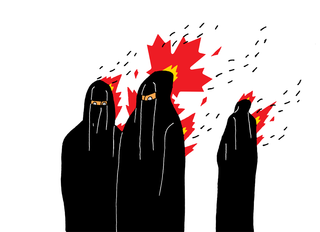
Extreme positions for otherwise status-quo parties
Harper challenged the right of a Muslim woman to wear a niqab during her citizenship ceremony, and soon after had the Parliament pass the Barbaric Cultural Practices Act, a law that set up a police hotline that would have received complaints against “barbaric practices” such as forced marriage – already illegal under Canadian law.
In 2010, when a boat carrying 492 Sri Lankan asylum seekers reached Victoria, on the west coast, then-public safety minister Vic Toews labelled them “suspected human smugglers and terrorists,” echoing the country’s anti-Asian immigrant rules of yesteryear.
The barbaric practices hotline was never set up. But the Conservatives aren’t done with scaremongering
Harper lost the 2015 elections to Justin Trudeau and quit politics. The barbaric practices hotline was never set up. But the Conservatives aren’t done with scaremongering. Candidate party leader Kellie Leitch recently drew attention for proposing to screen new immigrants for “anti-Canadian values.” She said that Donald Trump’s victory sent an “exciting message” to Canada. She repeatedly slams “the elites” for being out touch with the average Canadian, and calls the media “condescending and biased.”
Of course, we know better than to dismiss the possibility that an unconventional figure may one day play a prominent role in Canadian politics, because it’s happened before. From 2010 to 2014, Toronto was run by Rob Ford, self-declared racist and crack cocaine user.
Taking in Syrian refugees hasn’t always gone smoothly
Canada’s carefully crafted image as a tolerant and multicultural nation, which Trudeau is so intent on imparting to the rest of the world, is showing cracks, if you know where to look. The Syrian refugee program raised concerns from the population about the cost of the operation, the strain on public services it would create, and the security threats it could pose.
Today’s immigrants have never been more educated, yet rising economic inequality and flawed policies that limit their ability to transfer skills from their home country are keeping many of them in poverty. A community worker I spoke to in Thorncliffe Park talked about the difficulties faced by the neighborhood’s immigrants, many of whom are highly educated, to get their credentials recognized here – even though these credentials are precisely why they were selected to come to Canada.

What now, Canada?
Newcomers settle in a society’s that’s still deeply divided along racial lines. Writer Desmond Cole has penned a harrowing account of his life-long experience being racially profiled by police in Toronto, a city where 47% of residents self-declare as being part of a visible minority. Abdirahman Abdi, a 37-year-old Canadian man originally from Somalia who was suffering from mental health issues, was killed by police in Ottawa in the summer of 2016.
Those who dare addressing Canada’s racism expose themselves to a strong backlash. Denise Balkissoon, who co-hosts a new podcast on race hosted by Canada’s national daily newspaper The Globe and Mail, recently wrote about the hateful comments she’s received since the show began. An episode about “nipper-tipping,” a form of hate crime that targets Asian fishermen, spurred a particularly violent wave of harassment. “The burden of hate is exhausting and heavy,” she confided.
These examples are rooted in a colonialist, paternalist, and racist history that Canadians institutions and Canadians themselves are struggling to come to terms with. In a society built on inequality, multiculturalism cannot work forever as the social glue that holds people together. But if Canadians are prepared to face the darkest side of their national identity, it could serve as a solid base for national reconciliation.
The alternative wouldn’t maintain the status quo, it would mean something far worse. Because hate can take root anywhere – even in Canada.
More from The Correspondent:
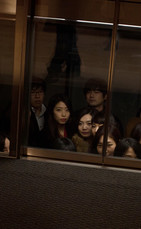
 To understand the magnitude of what’s going on in South Korea, watch this short film
The week after an arrest warrant was issued for the head of Samsung, we present the film Samsung Galaxy. It’s a disconcerting look into Samsung’s South Korea, told through a series of photos that chronicle a young woman’s daily life in Seoul – a life that would be impossible without the corporate giant.
To understand the magnitude of what’s going on in South Korea, watch this short film
The week after an arrest warrant was issued for the head of Samsung, we present the film Samsung Galaxy. It’s a disconcerting look into Samsung’s South Korea, told through a series of photos that chronicle a young woman’s daily life in Seoul – a life that would be impossible without the corporate giant.
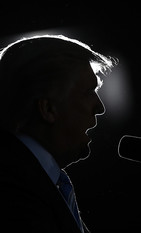
 Donald Trump, Russia, and the Mystery of “These People”
Donald Trump’s cabinet picks are warmongers and kleptocrats. The Russians interfered in the US elections. And President Obama has ordered a full review of the evidence. But I’m most concerned about "these people." Who does Trump mean by that?
Donald Trump, Russia, and the Mystery of “These People”
Donald Trump’s cabinet picks are warmongers and kleptocrats. The Russians interfered in the US elections. And President Obama has ordered a full review of the evidence. But I’m most concerned about "these people." Who does Trump mean by that?

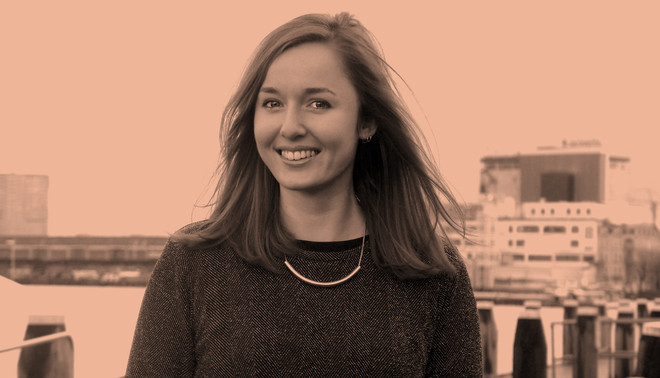 My mission as International Editor: bringing you border-crossing journalism
As of today, I’m The Correspondent’s International Editor. That means I’ll be looking for more effective ways our correspondents can collaborate with foreign journalists. Because topics that transcend national boundaries – like a universal basic income or the earth’s climate – deserve to be looked at from a global perspective.
My mission as International Editor: bringing you border-crossing journalism
As of today, I’m The Correspondent’s International Editor. That means I’ll be looking for more effective ways our correspondents can collaborate with foreign journalists. Because topics that transcend national boundaries – like a universal basic income or the earth’s climate – deserve to be looked at from a global perspective.





